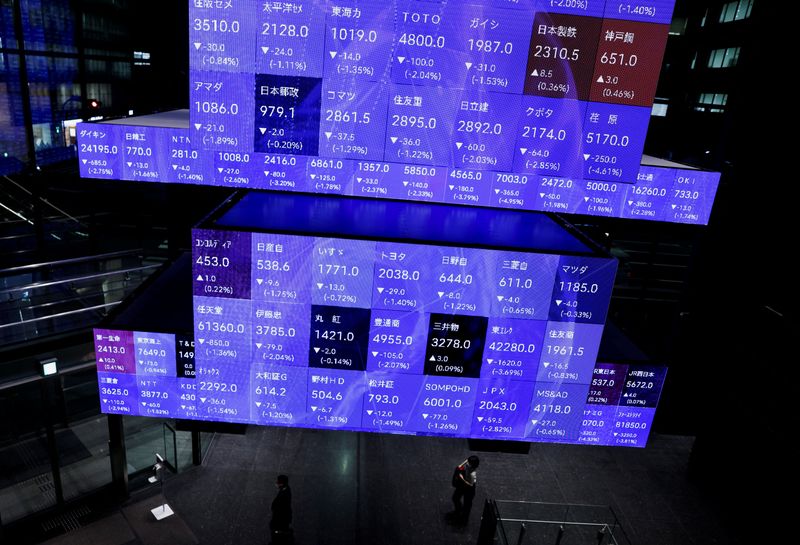By Summer Zhen
HONG KONG (Reuters) – Japan’s top-performing stocks are at risk of a sell-off because of overcrowded long positions in liquid and large companies, strategists from U.S. banks Morgan Stanley and JP Morgan say.
Quantitative strategists at these banks, who go by statistical models for their analyses, say long positions on top-performing stocks are becoming too large as overseas investors favour large-cap stocks or follow benchmark index products, inflating values of popular sectors such as semiconductors and banks.
Investors who use models for trend-following trades are also buying the same narrow set of stocks, and they too may start to unwind some positions, the strategists say.
Japanese stocks have hit record highs this month, surpassing a previous peak in 1989, as investors bet on better growth and corporate governance. The year-long rally has continued even after the Bank of Japan exited a decades-long negative rates policy.
Trend-following commodity trading advisors (CTAs) have recently shifted to reducing their long positions in 255 futures, JP Morgan quantitative strategy team led by Masanari Takada said in a March 26 note.
“We do not see much scope for additional expansion of long positions by CTAs because they have already reached a high level,” they said.
Similarly, Morgan Stanley noted that large-cap Japanese stocks began to lose some steam in March, with the stocks tracked by the bank posting a moderate gain of 2.5% this month compared to 6.2% in February.
“Japanese momentum stocks, in particular those in semiconductors, automobiles and financials, might face a short term headwind in April,” Morgan Stanley Asian quantitative analysts said in a note dated March 25.
For example, index heavyweights chipmaking equipment giant Tokyo Electron, and Toyota Motor (NYSE:) Corp have surged 56% and 49%, respectively, while Japan’s biggest bank, Mitsubishi UFJ (NYSE:) Financial Group, has advanced 30% so far this year.

The broader Nikkei index has jumped 22% this year and over 40% in the past year, outperforming the world’s major markets, but valuations for certain sectors are stretched, analysts say.
The Nikkei’s 12-month forward price-earnings ratio is currently 21, higher than its 10-year average and on par with the U.S. , suggesting Japanese companies are becoming expensive, even though current valuations are lower than in 1989.
